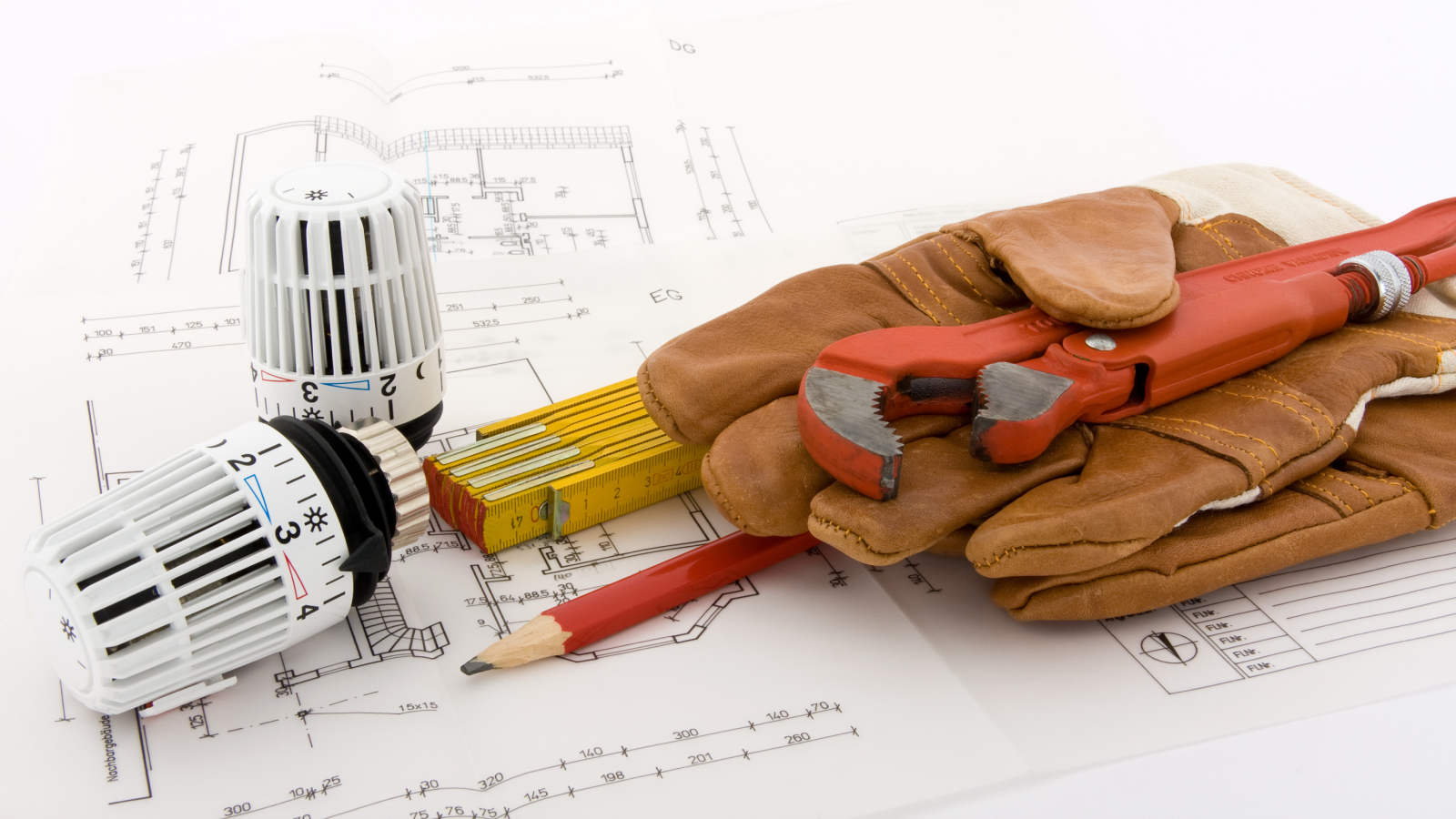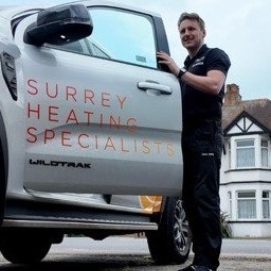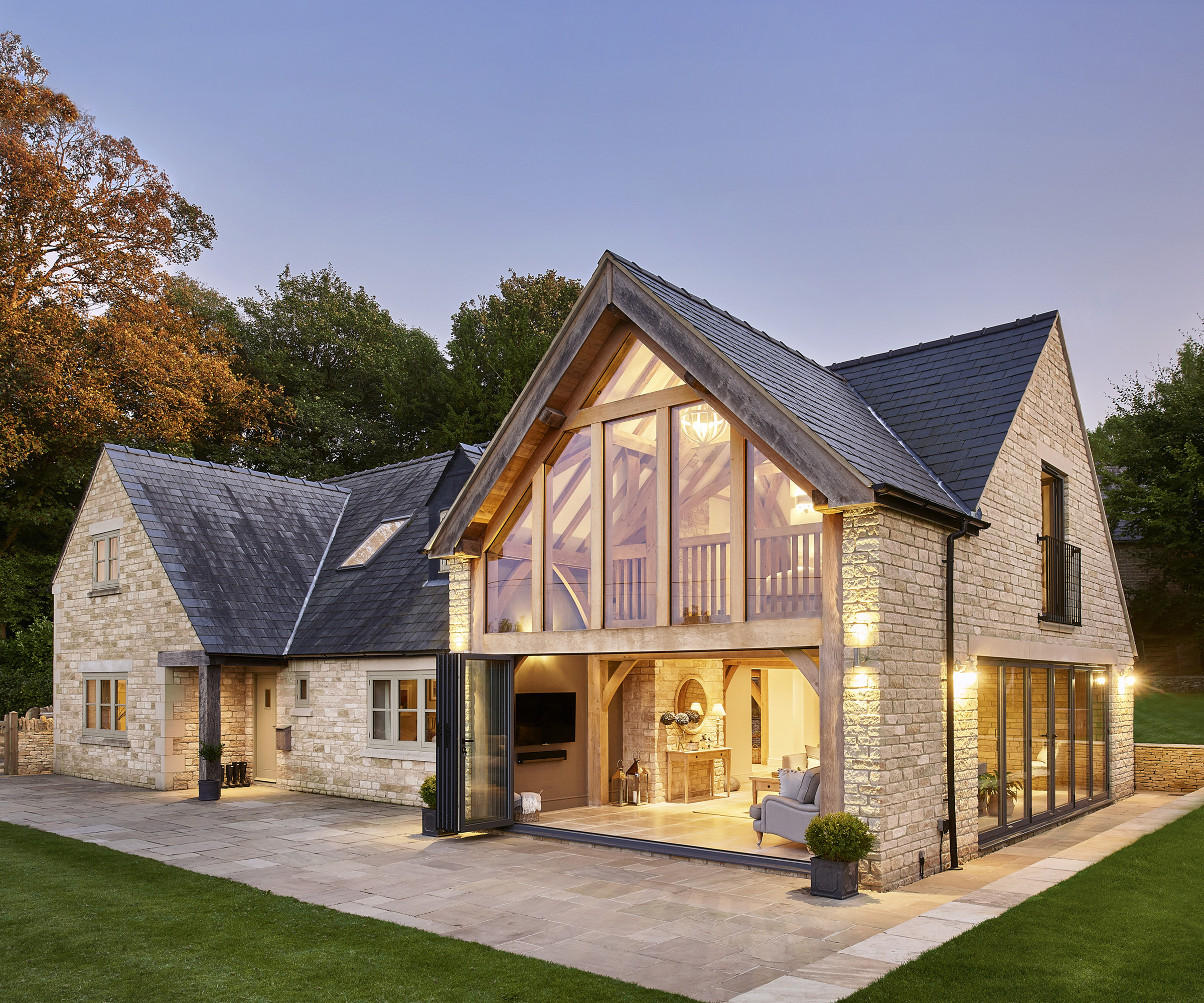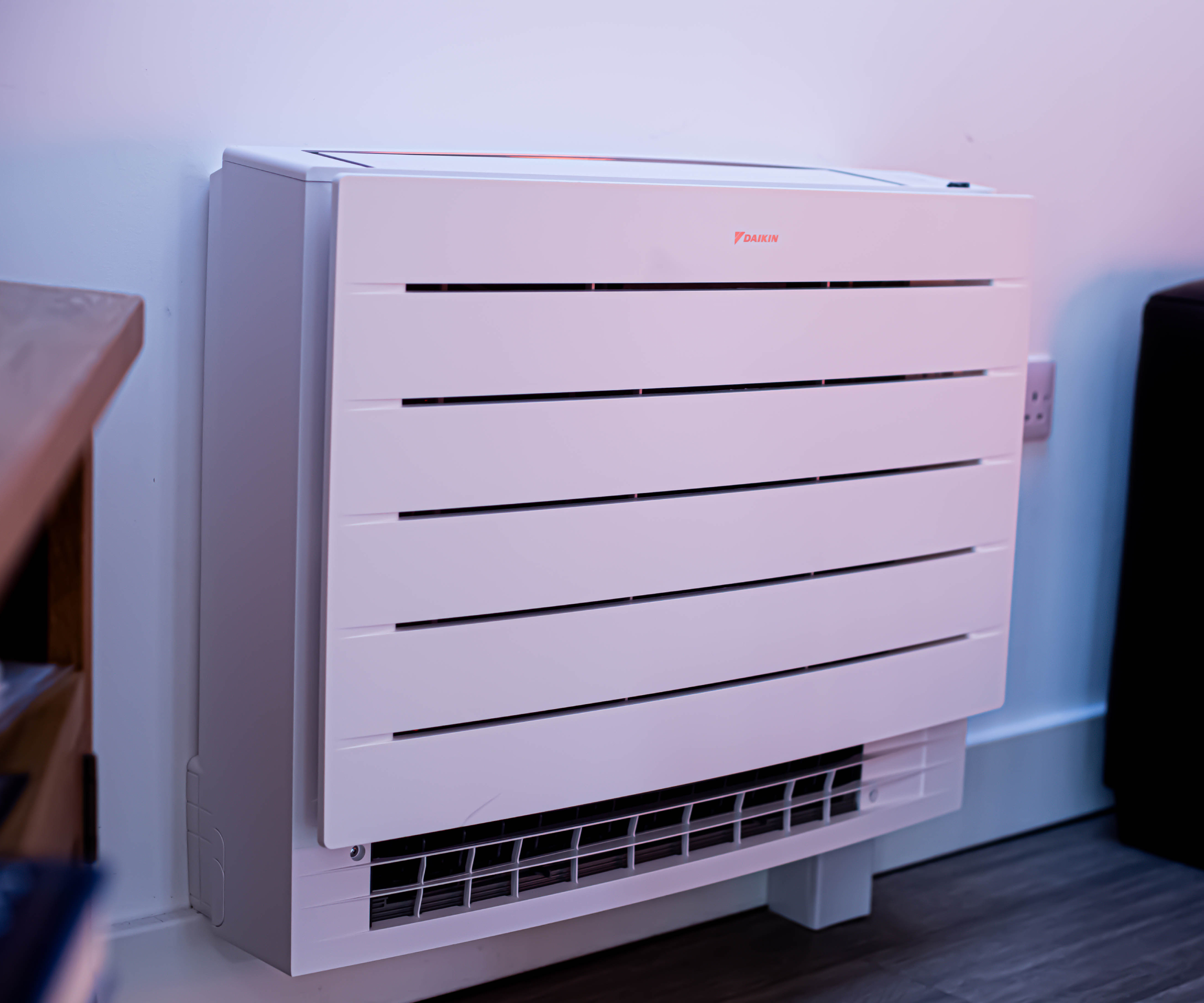The experts explain all the options for heating a house extension
Heating a house extension involves finding a solution for your new space and making it work with your existing one. We take a look at the choices available

When you're designing a house extension, deciding how to keep it warm and cosy will be part of the overall process, and when it comes to heating a house extension there are various options available to you.
However, as well as the size of the extension you're adding playing a part in your decision making, there are also a range of other factors to consider. For example, will the heating technology you choose connect into the existing heating system or do you want it to be independent? Can your current system support additional emitters or will that need changing too?
Here, we look at these various options along with their pros and cons.
Heating an extension – the importance of planning ahead
When thinking about how to heat a new house extension, it is very important to plan ahead before any work is undertaken.
"Whichever option you choose, whether it's radiators, underfloor heating or any other alternative, planning ahead is crucial," says Ryan Price, founder of Surrey Heating Specialists. "You'll need to consider insulation, the size of the space, and whether your current system can handle the added demand.”
It's also essential to start thinking about the heating system at the same time as you start to design the extension itself, since the architecture and materials used will be vital factors in ensuring the extension is a comfortably warm space, especially in winter.
The amount of glass used in the extension will determine how much it can utilise natural heat from the sun during the day, and if you select a wood-burning stove for example, the design will have to incorporate a flue.

Ryan Price is the founder of Surrey Heating Specialists and has 20 years of experience in the heating industry. Known for delivering reliable, high-quality solutions, he specialises in everything from boiler installations to heating system repairs. In recent years, Ryan has expanded into the renewables market starting Hybrid Electrical & Renewables, offering solar panel and battery installations to help clients embrace sustainable energy solutions.
Heating an extension: The options
When choosing how to heat an extension, the options available to you are similar to the ones you consider when designing your heating system for a new build or renovation. What's different is needing to consider how they will work with your current home's primary source of heat, or if you will need to add a new source to power your choice of heating emitters.
“A popular choice is to extend your current heating system by adding radiators or water-based underfloor heating (UFH)” says Ryan Price. “If you choose radiators, it’s essential to ensure they are connected correctly – always tee into the primary flow and returns of your system.
"Another option is electric UFH, which is easier to install and ideal for smaller spaces, though it typically comes with higher running costs," he adds. "Alternatively, air-to-air heat pumps or air-conditioning units with heating and cooling functionality can provide efficient, year-round comfort."
So what is the full range of options and the pros and cons of each one for heating an extension?
1. Underfloor heating
UFH systems are available in two forms – wet and dry. In a wet UFH, heated water is pumped through pipes in the floor, while more dry UFH uses electrical heating coils or mats. The operating costs for both can be less than a radiator-based heating system with a condensing boiler as your type of boiler, and even more so when combined with a heat pump.
“My personal preference would be for a wet underfloor heating system to heat an extension," says domestic heating engineer, Andrew Parrish, director of A Parish Heating. "It can be efficient to run and gives a pleasant stable heat, but this needs to be considered at the planning stage as pipework, wiring for controls, insulation and floor height need to be taken into account.
Electric underfloor heating also isn’t great for larger extensions," he adds, "as it can be expensive to run."

Andrew Parish has over 18 years experience working as a domestic heating engineer. He now heads up a team of engineers at his company, based in Harrogate. They design and install projects involving plumbing, heating, gas, air conditioning and renewables.
2. Radiators
"Radiators are probably be the cheapest option to install when heating an extension," says Andrew Parrish, "but they need to be sized correctly."
One thing to bear in mind when considering the types of radiator you want to add, is the style of extension you are adding. If you prefer contemporary glass extension ideas for example, you'll likely have less available wall space on which to mount your radiators, making other forms of heating more suitable.
3. Air-to-air heat pumps
"I also wouldn’t rule out the option of installing an air to air heat pump or air conditioning unit," says Andrew Parrish. "These units are electric but are very efficient and can be installed without too much upheaval.
"You would need to find a suitable location for the external unit, but this would give the benefits of quick heat up time in the colder months and cooling in the summer. This would be particularly useful if your extension has a lot of solar gain from windows and bifold doors,” suggests Andrew.
4. Infra-red heaters
Infrared heating systems will not require additional pipework, unlike conventional central heating and they are usually fairly easy to install as they are fairly small and consist merely of electrical wiring that can be installed by an electrician. They also have no moving parts that need to be serviced and with no risk of leaks.
5. Wood-burning stoves or space heaters
Space heaters are mostly inefficient and tend to be noisy. Log burning stoves are generally very efficient and may be a solution to heating an extension – especially if you are adding a cosy snug or extra living room, but they can contribute to urban pollution, and the price of fuel may vary. You will also need to incorporate the space for the flue in your design.
7. MVHR systems
“Other heating and cooling methods include considering a MVHR system,” says Graham Ford of Graham Ford Architects.
“This is an energy efficient method of heating that recirculates air and recovers heat using a heat exchanger. Fresh air is drawn into the unit. However, this form of heating system is best suited to a new build. The unit can be installed in older houses but the pathways of all the ducts need to be carefully planned as does the location of the unit."
Given the efficiency of an MVHR unit also relies on a good level of airtightness, it may require extra work to improve the efficiency of your current home that would make it a costly and lengthy solution compared to other options.

Graham Ford is a highly experienced architect that specialises in designing sustainable buildings and masterplans. With over 22 years of experience within the industry, he's also the author of The Total Environment Masterplan, and is currently a Senior Lecturer at the School of Architecture at the University of Portsmouth.
Extending or replacing your current heat source
Extending your existing heating system into the extension will involve the connection of new radiators or underfloor heating into the existing heating system. The key consideration is whether your existing system has enough capacity to handle the additional heat load.
If not, you may have to upgrade or replace your boiler, depending on the size of the extension, and new pipes will be needed running into the extension. This will require an assessment by a qualified heating engineer before you proceed. A plumber or heating engineer undertaking this work should always be Gas Safe registered if working with gas boilers or OFTEC-registered if the boiler is oil fuelled.
If your existing boiler can cope with the increased heat demand that an extension will bring, there is usually no need to replace it – although there is a caveat.
Older boilers tend to be less efficient which could already be resulting in increased energy bills. Installing a new and more efficient boiler will ensure that your energy bills (which will naturally cost more with more space to heat) are minimised, and that warmth is distributed throughout the building consistently.
If the house extension is large, such as a double storey extension, then the added extra space might also mean installing a more powerful boiler and this might also mean replacing your pipes as well.
Or, perhaps you might consider your fossil fuel heating source for something more environmentally friendly instead.
"Some clients are now wanting to install a heat pump to power all the heating of their house, when extending," notes Graham Ford. "You need to plan for this as you may need to apply for planning permission for the heat pump so make sure it is on the drawings," he adds.
Environmentally-friendly heating systems can also include biomass boilers and solar panel systems, although biomass boilers will require more space and a storage area for wood fuel.

Adding an independent heating system
Adding an independent heating system to fulfil the needs of a house extension will involve installing both new emitters and a new heat source, making it potentially even more expensive with the additional costs for pipework, control systems and structural modifications.
However, in this way you can be more flexible in your choice of heating system, potentially improving the energy efficiency of the system through the careful selection of the type of heating and the control systems.
Heat pumps are becoming increasingly popular, and the running costs for a heat pump are far less than those of a gas boiler, generating significant savings on energy bills. Or, for a larger two storey extension needing both hot water and heating, you could even consider an all in one solution such as the Daikin Multi+ system.
Integrating air conditioning, domestic hot water, and air purification in a single unit, it has only been available in the UK since 2024.
“Requiring minimal space, the Daikin Multi+ system is a real game changer. Not only is it quick and easy to install, it gives the customer cooling, heating, air purification and hot water in one, simple to use system," says Hamid Salimi, Daikin’s residential product manager. The outdoor unit's size means that it is ideal for small outdoor spaces such balconies and terraces.
"The system automatically adjusts water temperature based on external conditions, meaning no manual intervention is needed and the electric booster heater guarantees hot water on demand, even when cooling is in use," he adds.
"Cutting-edge fan technology also minimizes noise and energy consumption and it's compatible with the Daikin Onecta app, allowing users to control their home’s climate from anywhere via Amazon Alexa or Google Assistant."

FAQ
Can I use radiators in my existing house and wet underfloor heating in the new extension?
Combining radiators with an underfloor heating system is possible. The easiest option is to feed both sets of emitters from the boiler and have the radiators set to a normal flow temperature of around 60°C, and the underfloor heating system both fed from the boiler, with a blending valve and pump to lower the water temperature to 40°C. This is because the two systems require different water temperatures.
Alternatively, set the boiler at a low temperature, probably 40°C, and install oversized radiators to compensate for the lower flow temperature of the water running through them.
The two systems also have their own control devices, both needing two-port valves (known as an S-plan system), which gives them independent control. A two-channel timer controls the radiators and the hot water supply while programmable room thermostats control the underfloor heating.
As well as the choosing the right heating option for your extension, don't forget the importance of insulating an extension well too.
Insulate the extension with cavity wall insulation in the walls, insulation in the roof space and 24mm double glazed windows as part of your extension heating plans. Energy efficient low emissivity glass will also help to stop heat escaping through the windows.
However, too much insulation can mean that your new extension will suffer condensation problems or cold bridging, which causes mould, so adequate extension ventilation is essential as well.
Get the Homebuilding & Renovating Newsletter
Bring your dream home to life with expert advice, how to guides and design inspiration. Sign up for our newsletter and get two free tickets to a Homebuilding & Renovating Show near you.

Robin is a freelance journalist based in the South West of England, UK. He specialises in environmental issues, climate change and renewable energy, with other interests in transport and green motoring. He is a regular daily correspondent for a renewable energy website, writing news articles and interview pieces on all the main clean energy technologies. He has also written widely for numerous magazines on these topics, as well as writing white papers and web content.
